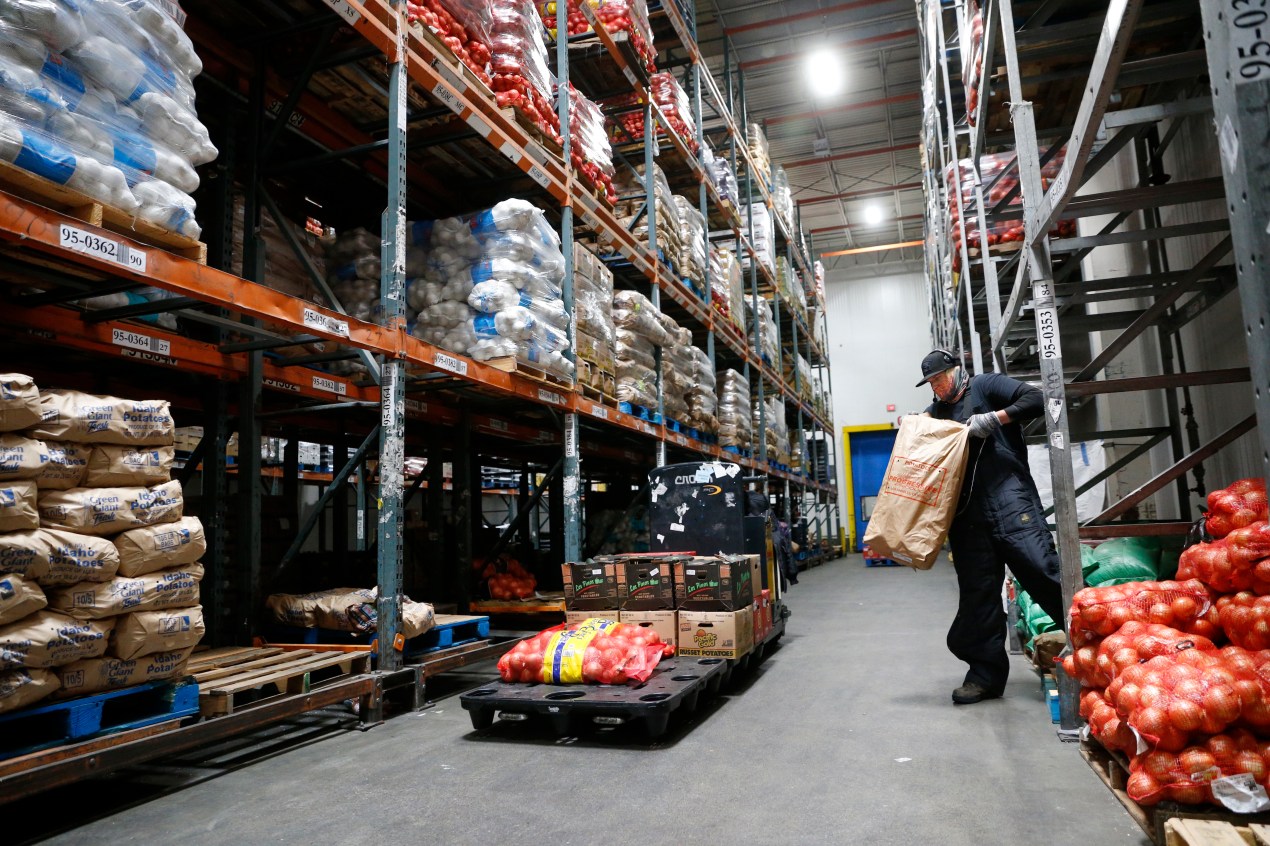SACRAMENTO — Gov. Gavin Newsom’s administration unexpectedly yanked its support from a sweeping proposal that would have protected millions of California’s indoor workers from dangerous heat, saying it can’t endorse it without knowing the projected costs to the state.
But the board that oversees worker safety immediately defied the administration Thursday by unanimously approving new standards intended to protect people who work in poorly ventilated warehouses, steamy restaurant kitchens, and other indoor job sites.
The showdown represents a setback to the state’s climate and labor policy goals, and throws the fate of the rules into unknown territory. They had been expected to take effect by summer.
The move by the Democratic administration angered board members, who called it a “last-minute stunt” that undermines their regulatory process. It also sparked a protest by warehouse workers, who temporarily shut down the meeting as they waved signs declaring that “Heat Kills!” and loudly chanted, “What do we want? Heat protection! When do we want it? Now!”
“We got blindsided today, and I don’t think it was fair,” said David Thomas, chair of the California Occupational Safety and Health Standards Board, who became visibly upset several times during the meeting. “They hung our ass out to dry.”
The rules to protect indoor workers had been years in the making, but Newsom’s Department of Finance informed board staffers the night before the vote that it couldn’t sign off. They told us “the potential fiscal impacts on public sector entities haven’t been fully analyzed,” Eric Berg, deputy chief of health and research and standards at California’s Division of Occupational Safety and Health, reported to the board.
Newsom spokesperson Omar Rodriguez declined to comment. But Department of Finance spokesperson H.D. Palmer disputed the characterization of the administration’s concerns as “last-minute.” He said the administration has held meetings with board staffers for weeks to discuss estimates for how much it would cost the state to implement the rules in its own buildings. They provided the most recent estimates to Palmer’s department in February.
By law, the Department of Finance is required to approve a fiscal review for any regulation that would have significant economic impacts.
For example, the indoor heat standard proposal could cost the state billions of dollars just to keep its prisons cool enough for workers and inmates, Palmer said, based on the board’s estimate.
“We need to evaluate that. Is it too high? Is it on point?” he said. “This is not a decision made in an arbitrary manner or concerning policy. We did not have the time to do due diligence.”
Palmer would not comment on how much longer it would take to analyze the cost of the rule.
The deadline to keep the proposal on track is March 30. Otherwise the years-long regulatory process may have to start from scratch. But this is unknown territory, and board members said at the March 21 meeting they are not sure how to proceed. Some suggested they could adopt emergency regulations — but even that would take time.
The state has had heat standards on the books for outdoor workers since 2005, and indoor workplaces were supposed to be next. The proposed standard would require work sites to be cooled below 87 degrees Fahrenheit when employees are present and below 82 degrees in places where workers wear protective clothing or are exposed to radiant heat, such as furnaces. Buildings could be cooled with air conditioning, fans, misters, and other methods.
For businesses that couldn’t cool their workplaces sufficiently, such as laundries or restaurant kitchens, where commercial boilers, ovens, and fryers operate, the rule would offer them the option of giving workers cooldown areas and other relief.
Some businesses have expressed fear that they won’t be able to meet the requirements if they are enacted, even with the flexibility the regulation offers. Providing a place for a kitchen worker to cool down in a small restaurant, for example, might not be feasible, according to the California Restaurant Association.
But workers and labor advocates demanded at the March 21 meeting that the board take action, saying employers must protect workers and adapt to a warming climate.
“How many workers have to end up hospitalized or, even worse, end up dying because of heat illness, because there’s no protections put in place?” Yesenia Barrera, an organizer with the Warehouse Worker Resource Center, asked board members.
Heat stress can lead to heat exhaustion, heatstroke, cardiac arrest, and kidney failure. In 2021, the Centers for Disease Control and Prevention reported 1,600 heat-related deaths, which is likely an undercount because health care providers are not required to report them. It’s not clear how many of these deaths are related to work, either indoors or outdoors.
In California, 20 workers died from heat between 2010 and 2017, seven of them because of indoor heat, according to the Rand Corp., which analyzed the state’s proposed indoor heat rules.
Only two other states, Minnesota and Oregon, have adopted heat rules for indoor workers, according to the U.S. Occupational Safety and Health Administration. Nationally, legislation has stalled in Congress, and even though the Biden administration has initiated the long process of establishing national heat standards for outdoor and indoor work, the rules are likely to take years to finalize.
California regulators have crafted the indoor rules to complement the state’s protections for outdoor workers. Those say that when temperatures exceed 80 degrees, employers must provide shade and observe workers for signs of heat illness. At or above 95 degrees, they must come up with ways to prevent heat illness, such as reducing work hours or providing additional breaks. Colorado, Oregon, and Washington also have rules for outdoor workers.
This article was produced by KFF Health News, which publishes California Healthline, an editorially independent service of the California Health Care Foundation.
